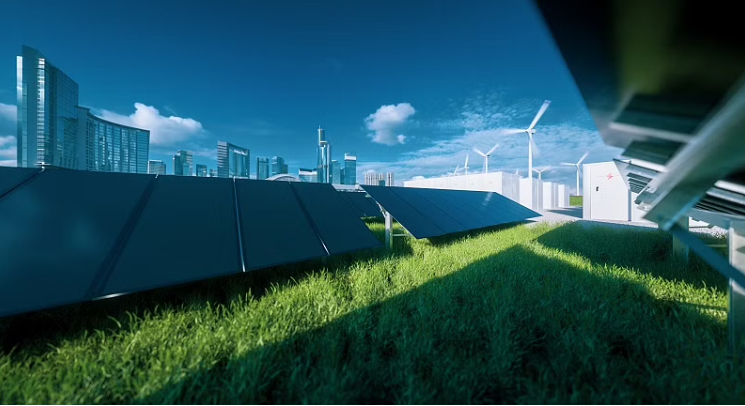While air and water pollution, greenhouse gas emissions, depletion of natural resources, and piling up of massive e-waste resulting in environmental issues, here are some ways to curb the issues through technology.
Technology has been extolled for its ability to dematerialise, and innovative advancement in technology has helped improve our lives in many ways. But its imprudent use can be harmful to the ecosystems. Though humans have been relying on technology for some time, it can be a double-edged sword which is capable of both doing and undoing the damage.
The ongoing global pandemic is an awful reminder of the venturesome behaviour of humans and their insatiable desire, greed, and how they have indiscriminately used technology to destroy nature.
The environmental issues confronting Earth are exacerbated by the industrial revolution that has harmed the environment as a result of high levels of air and water pollution, increased carbon footprint, greenhouse gas emissions, depletion of natural resources, and piling up of massive e-waste.

Inventive green technology can ameliorate the negative effects of climate change. It can be the potential solution to restoring and recovering Earth, and fundamentally changing the way we live, work, and harmonise with the external world. Generating clean and renewable energy from sources such as the Sun and water resources can revolutionise not only the energy sector but our lives too.
Micro-mobility and electric vehicles
Almost 28 percent of all greenhouse gas emissions come from various modes of transport. Electric and micro-mobility vehicles are the best alternatives for vehicles currently running on fossil fuels.
According to a McKinsey survey, around 70 percent of respondents are inclined towards micro-mobility vehicles and electric vehicles. The use of electric vehicles has increased significantly around the world, helping reduce greenhouse gas emissions and improve air quality for a healthy life.
Indoor vertical farming
Indoor vertical farms grow food in vertical columns under controlled climate conditions, using the space efficiently. They help supplement conventional agriculture when the supply chains are disrupted or there are poor weather conditions. Indoor farms also help save on logistics costs.
Beyond providing fresh local produce, vertical agriculture could help increase food production and expand agricultural operations as the world’s population is projected to exceed nine billion by 2050. By that time, two out of every three people are expected to live in urban areas. Many companies are investing in vertical farming to provide advanced sustainable, fresh, healthy, and nutrition-rich products all year, especially in urban areas.
Green architecture
The architecture industry is adopting the ‘Go Green’ method because of growing concerns for the environment and sustainability.
Green architecture suggests sustainable energy sources, conservation of water and energy, reuse of building materials, and the making of a building taking care of its impact on the environment and health of inhabitants. Buildings are constructed in a self-sustainable manner, are adequately insulated and consumption of energy is considerably reduced.
Sustainable clothing
The fashion industry is responsible for almost one-fifth of total water pollution, besides generating huge clothing waste that cannot be recycled due to ‘fast fashion’. However, in contrast, sustainable fashion or ‘slow fashion’ advocates the use of fashion products produced in an eco-friendly and ethical manner.
Unlike fast-fashion clothing, sustainable fashion significantly reduces waste. Fabrics are derived from eco-friendly resources such as sustainably grown fibre crops or recycled materials. Natural fabrics like organic cotton and linen made from plants and Tencel – which is made from sustainable wood pulp – are better for the environment than man-made fabrics like polyester and nylon, which are petroleum-based and take hundreds of years to decompose. Eco-ethical brands use long-lasting materials that helps in reducing waste.


